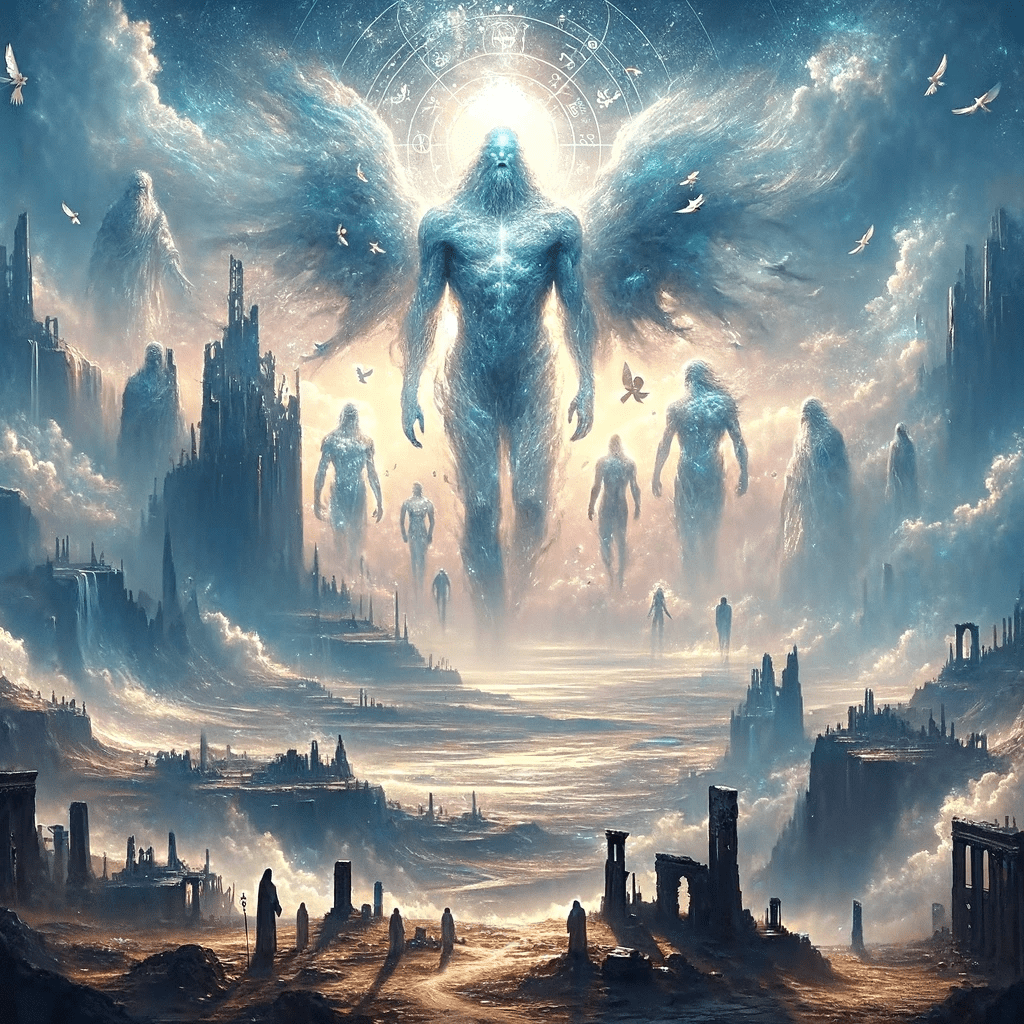Nephilim

In an age where the inexplicable phenomena of UFO sightings, alleged non-human intelligence contact, and reverse engineering theories flourish, the ancient texts of the Book of Enoch offer a fascinating parallel. This ancient manuscript looks into the interactions between celestial beings, known as “Watchers,” and human beings, resulting in the birth of the Nephilim or giants. These narratives, while ancient, resonate with modern tales of extraterrestrial encounters, abductions, and the pervasive idea of advanced non-human intelligence influencing human history. By examining the Book of Enoch, we can explore the enduring human fascination with the otherworldly and consider its implications for understanding contemporary reports of UFOs and other unexplained phenomena.
The Book of Enoch looks into elaborate details about celestial beings, their interactions with humans, and the resulting progeny known as the Nephilim or giants.
The Nephilim are described as the offspring of the “sons of God” or the “Watchers” (a class of angels) and human women. These beings are often depicted as giants and are said to possess great strength and knowledge. However, their existence on Earth brings corruption and violence, leading to widespread disruption and suffering. The narrative suggests that the sin of the angels and their unnatural offspring incurred the wrath of God, ultimately leading to the great flood as a form of divine judgment.
Chapter 7:2-6 “And they became pregnant, and they bare great giants, whose height was three thousand ells: Who consumed all the acquisitions of men. And when men could no longer sustain them, the giants turned against them and devoured mankind. And they began to sin against birds, and beasts, and reptiles, and fish, and to devour one another’s flesh, and drink the blood. Then the earth laid accusation against the lawless ones.”
In this particular passage, it describes the origin and nature of giants or Nephilim, who are believed to be the offspring of human women and the “holy Watchers” or fallen angels. These giants are referred to as “evil spirits upon the earth,” and it is suggested that they are responsible for causing trouble and destruction on Earth. This passage highlights the belief in the supernatural origins of these beings and their malevolent nature.
The text paints the Nephilim and their angelic fathers as “evil spirits,” highlighting their destructive nature and their role in leading humanity astray. This characterization reflects a broader theme in the Book of Enoch concerning the consequences of heavenly beings interfering with the human realm and the subsequent moral and physical corruption that ensues.
These chapters depict the “Watchers,” a specific group of angels, becoming infatuated with human women, leading to the birth of the Nephilim, described as giants and associated with great wickedness and voracity. The narrative sets up a series of events that contribute to the corruption and violence on Earth, ultimately leading to God’s decision to cleanse the world through the Great Flood.
Despite its exclusion from the biblical canon in most Christian traditions, the Book of Enoch holds significant historical and theological value. It provides a window into the religious and mythological cosmology of early Jewish and, by extension, early Christian sects. The book’s rich descriptions of angelic hierarchies, the spiritual realm, and the fate of souls after death have intrigued scholars and believers alike, influencing various mystical and esoteric traditions.
Furthermore, the Book of Enoch’s impact extends beyond its immediate religious context. Its themes and narratives have permeated Western art, literature, and thought, contributing to the broader cultural imagination concerning angels, demons, and the supernatural world. Whether regarded as scripture, myth, or historical artifact, the Book of Enoch continues to fascinate and inspire those interested in the ancient roots of religious belief and the enduring power of mythic storytelling.
As we stand at the crossroads of history and mythology, the Book of Enoch remains a compelling source for contemplating the unknown. The ancient stories of the Nephilim, the Watchers, and the resultant cataclysmic events mirror modern narratives of UFO sightings, abductions, and alleged reverse engineering of non-human technologies. These parallels suggest a continuous human quest to understand the nature of our universe and our place within it, grappling with the possibility of other intelligent beings.

